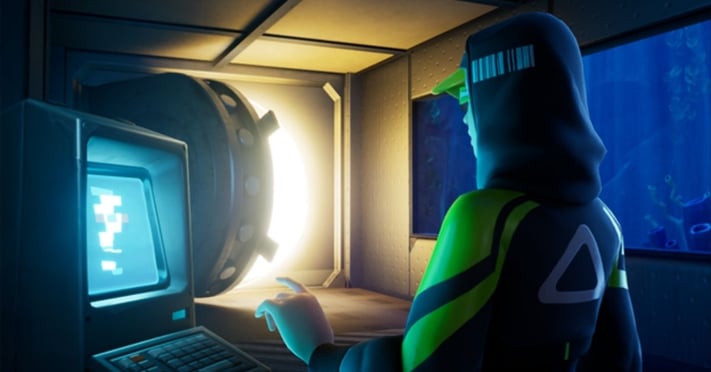
SpyTycoon. Image courtesy of Epic Games.
Video games are everywhere. In every home, on every phone, they seem to beckon with distractive possibilities. Or at least that’s how we are trained to think of them as teachers. Video games are fun, not for learning.
And yet, right under our noses the underlying technology that powers game development—game engines—is revolutionizing industries all across the world, influencing everything from car design to the way companies train their employees.
What’s especially interesting about this is that for all of the enthusiasm students throw at video games, few realize just how many opportunities are starting to open up to people that learn the technology. This is the promise of interactive 3D.
A New Future
So why did all of these artists, designers and companies start playing around with game tech?
It’s pretty simple, really. The tools got easier to use, the visuals got more realistic, and the experiences became even more immersive. The latter was an especially big draw because, as you know, when people feel a strong connection to something, knowledge retention and enthusiasm go up. Way up.
If you are new to interactive 3D, Epic Games—the creator of Unreal Engine—defines it as: “the ability to interact with the digital world the same way you do with the real world.” In practice, that usually means navigating 3D spaces or interacting with 3D objects in real time. Sometimes by mixing the real world with a virtual component.
Take augmented reality (AR), for example. In AR, virtual environments or objects are overlaid over a real-world component, like the room you’re in. Someone puts on a headset, or kicks on a phone app, and suddenly they can see a mix of real and virtual things. If you’ve seen any of the storm simulations on The Weather Channel, you know this can be done to dazzling effect.
But interactive 3D isn’t limited to AR or headset-based scenarios. You know all those car commercials? Ninety percent of the cars were created using interactive 3D technology.
Game engines even have a place in the medical world. CSL Plasma, a biopharmaceutical company, uses interactive 3D to train their employees on how to draw blood from patients, including identifying the correct vein, using proper sanitization swabbing procedures and inserting the needle at the correct angle.
Seemingly everywhere you look, organizations are finding freedom in interactive 3D. And students can help them do even more.
The Benefits of Teaching Interactive 3D in the Classroom
There is evidence that shows that gaming (as in, the act of playing video games) can provide beneficial life skills. Epic Games’ Education Program Manager Steve Isaacs states, “When we engage students with game technology, we empower many with the ability to leverage their expertise to demonstrate learning in amazing ways. Challenges often become more meaningful to students in this space, leading to students taking ownership of their learning."
Here are three ways learning game engine technology can benefit students.
- Boosts engagement and motivation
By tapping into students’ natural gaming interests, gamified education can improve student engagement and motivation. When students are empowered with these tools in the classroom, they are more interested, focused, and driven to succeed. With teacher and staff shortages, schools need programs that allow for independent, personalized learning that keeps students engaged. Learning platforms like Epic Games’ Unreal Engine offer hands-on video courses and guided learning paths, supporting teachers where they may not have expertise. - Improves problem-solving skills
Most video games require some degree of critical thinking and problem-solving. Through trial and error, gamers learn from their mistakes. As game conditions change, gamers need to adaptively make decisions and problem solve. If they keep making the same mistake, they can’t progress. They are forced to find a different solution to their problem. These are problem-solving skills that transfer into the real world and set students up for success in the future. - Prepares students for the workforce
The demand for 3D technology skills is growing extremely fast. A Burning Glass Technologies study found that “jobs requiring real-time 3D skills are growing 601 percent faster than the job market overall, and pay 57 percent above the average advertised salary.” 3D skills are now essential in industries such as architecture, manufacturing, health care, media and entertainment. Most jobs within these industries have a strong focus on science, technology, engineering and mathematics (STEM). By integrating gaming technology such as Fortnite Creative, schools enable students to create immersive experiences related to any content area while developing STEM/STEAM skills.

Primal Rumble. Image courtesy of Epic Games.
The key is unlocking these paths for students by moving them from “player” to “creator.” And by incorporating real-time 3D tools in your school’s curriculum, you can start versing your students in the nuances of technology that will always make them marketable, and will often inspire a new perspective around what they can accomplish and when. Win-win.

